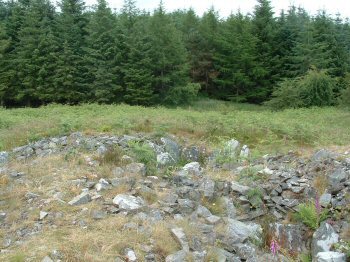Have another look at that panorama of
Well, it’s a long story but worth re-telling in the light of subsequent developments – or rather, the lack of them!
In the late 1960s-early 1970s the major story was that the world’s reserves of fossil fuels, especially oil were almost exhausted. From time to time, graphs and statistics were produced to prove how few years were left before imminent disaster. Unsurprisingly the OPEC countries hurriedly quadrupled their prices leading to a world economic slump. Remember
Ironically, thirty five years later, energy reserves and the control of them now and into the future continues to dominate the political landscape. It is conservatively estimated that
Still what has all this got to do with the Ballinalack Tunnel?
Remember Economy Seven Electricity? The only fruitful way we know to store electricity is using batteries – and that only at the low level of specific and directed personal consumption. At the National Grid level, electricity must be consumed as it is generated. But there are seven hours – between midnight and breakfast – when the demand is very low. If we can use power then, and slowly release it usefully over the following seventeen hours, then we make more efficient use of our limited resources.
Some of us fell for the argument and installed those brick-filled heaters in our homes. There were problems of controlled release: you couldn’t get heat when you most needed it. Then the oil giants cut their prices again to successfully compete.
At the National Grid level, the theory was that in hydro-electric schemes in suitable areas, water could be pumped to a high-level reserve dam at night, when cheap electricity could fuel the pumps, and the same water released during the day could generate more electricity when it was most needed. It was a good example of ‘greener’ energy and far-sighted planning. It failed at Camlough. Excavation ended in 1971. Why?
Certainly at the time the authorities put the blame on local farmers who demanded unrealistic prices for unproductive lands that had to be acquired by NIE. Whether or not there were other factors – and such a scheme was always going to be peripheral to consumer needs – it is evident that originally a great deal of money and effort had been invested in the project before it was abandoned.
The main tunnel – of bore large enough to accommodate articulated trucks! – is some 891 metres in length, with at least one side tunnel. It runs westwards under the
Our ‘Troubles’ had scarcely begun, and certainly
Hydro-Electric Power schemes work best where rainwater in rivers flowing from higher ground is channelled to drive turbines. Gravity makes it fall and no power has to be expended to raise it first to the higher level. There are many cheaper and preferable schemes today – wind, wave, tidal power and solar panels to name but a few. It is highly unlikely that the Camlough Hydro-Electric Scheme will ever be revived.
Does any one know what, if anything is presently stored in that huge tunnel, and who has ownership of it? If so, please email us with the information.
The only good that came out of it all was when the Geology Department of Queens University was called in to do a geological survey of the excavated site. Their Report is available in Newry Library.
Ironically the Geology Department there too has been scrapped!
